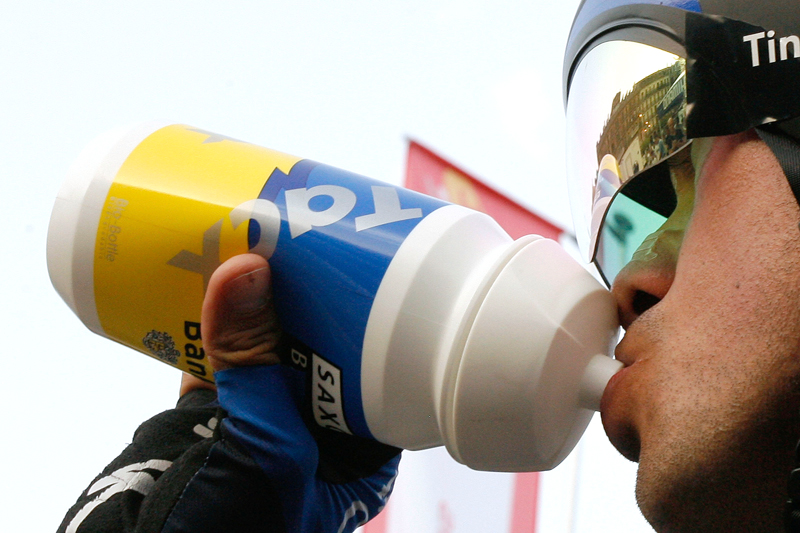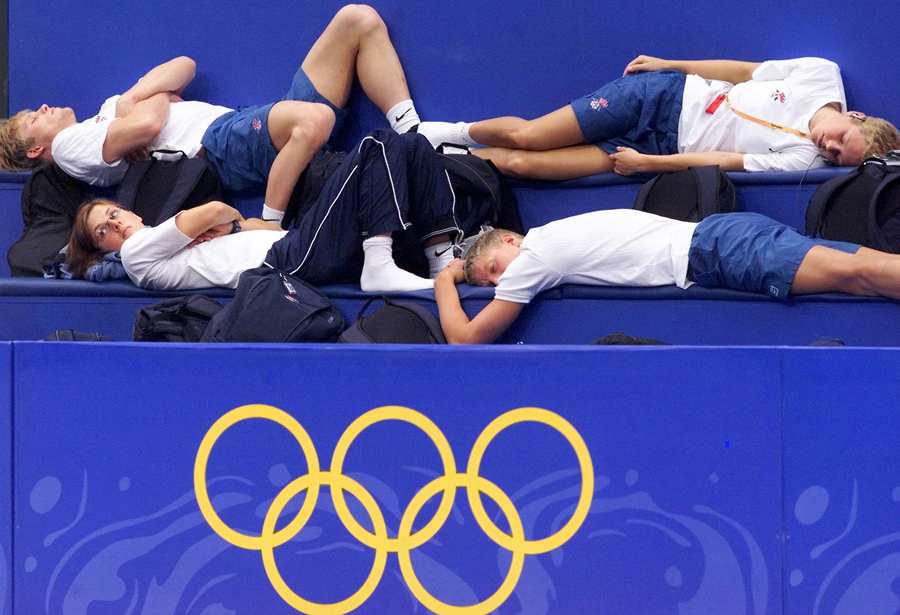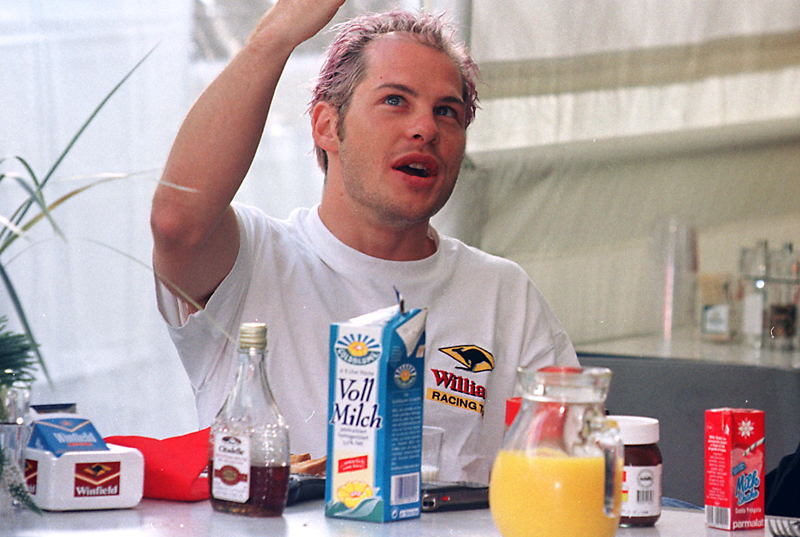Genuine advances in sports nutrition are bit like politicians who actually say what they think – rare enough to count on the fingers of one hand. But as Andrew Hamilton explains, recent research into carbohydrate nutrition has resulted in a new breed of carbohydrate products that really do deliver improved performance!
Even if you’ve only a basic grasp of sports nutrition for performance, you’ll probably already know that ensuring an adequate intake of carbohydrate during training and competition is absolutely vital for performance - especially during longer workouts where even a small carbohydrate shortfall can lead to a significant drop in performance. But why is carbohydrate so important?The reason for this is simple; carbohydrate can be stored in the muscles as ‘glycogen’, which is broken down very quickly during exercise to provide large amounts of muscular energy for movement. While it’s true that fat is a concentrated source of energy and can also be stored in the body, it can’t be broken down to release energy as rapidly as carbohydrate. This is because burning fat for energy requires lots of oxygen and more intermediate steps to release that energy.
Of course, fat-burning is fine when you’re working only gently and your muscles don’t need to be rapidly supplied with energy. In a race, match or hard training session however, you’ll need ample available carbohydrate to enable your muscles to work much more intensely. Another reason why carbohydrate trumps fat as fuel for vigorous exercise is that (for short periods) it can be broken down to release energy even when there’s no oxygen available - for example a flat-out sprint to the line.
Carbohydrate drawback
There is however one major big drawback to using carbohydrate as fuel – limited storage. Unlike fat, which provides tens of thousands of stored calories of energy (body fat), your muscles can only store around 2- 2½ hours’ worth of glycogen for hard exercise – ie around 300-400g in total. Regular endurance training can help boost this storage capacity by up to 50%, extending endurance by up to 20% before fatigue sets in(1-3), but the fact remains that your glycogen reserves are limited.This explains why the human body runs a ‘dual-fuel’ system. During gentle exercise, fat can be utilised almost exclusively for energy, which helps spare muscle glycogen. As the exercise intensity increases, the contribution to energy demand from glycogen steadily increases, until (when exercise becomes very hard) nearly all of the energy is being supplied from carbohydrate – see figure 1.

Carbohydrate supplementation
Given that stores of precious muscle glycogen are limited, it’s natural to ask whether ingesting rapidly absorbed carbohydrate during exercise (eg drinks, gels and energy bars) can help offset the effects of muscle glycogen depletion - by providing working muscles with another source of glucose (the building blocks of glycogen). A number of studies carried out in the late 1980s and 1990s showed that carbohydrate taken on the move can indeed prolong endurance. Among the key findings were:- Glucose carbohydrate drinks ingested during exercise can be oxidised (burned for energy) at a rate of roughly 60 grams per hour4-6);
- This ingested carbohydrate becomes the predominant source of carbohydrate energy late in a bout of prolonged exercise (7), and can delay the onset of fatigue during prolonged exercise such as cycling, running swimming etc as well as improving power output(8,9).
However, while these glucose-based carbohydrate products provide a means of boosting endurance, the maximum absorption rate of 60g per hour actually only amounts to around 250kcals of energy per hour - a modest replenishment of energy compared to that being expended during training or competition.
For example, a fit cyclist or triathlete can easily sustain an energy output of 900-1000kcals per hour during a race or sportive, around 800kcals of which would need to be provided by burning carbohydrate. This leaves a shortfall of at least 550kcals of carbohydrate per hour – a shortfall that has to come from limited and precious glycogen stores!
Consuming larger volumes of drink per hour or more concentrated drink formulations is not the answer because we know from studies that 60g of glucose per hour is the maximum the human body can absorb and utilise. Consuming more than 60g of glucose per hour doesn’t result in better performance – in fact it might actually harm it because gastric distress may become a problem.
Improving carbohydrate supplements
In the mid 1990s, Canadian scientists were experimenting with giving carbohydrate drinks containing mixtures of two different sugars (glucose and fructose) to cyclists(10). In particular, the researchers wanted to see how well these mixtures were absorbed during exercise and oxidised for energy in the body. The key finding was that when the cyclists drank a 50/50 glucose/fructose mix, the amount of the ingested carbohydrate that the cyclists were able to use for energy production increased by over a fifth.Then in 2004, a team from the University of Birmingham led by Professor Asker Jeukendrup published a landmark study(11). In this study, cyclists performed four exercise trials in random order while drinking one of the following drink formulations:
- 1.2 grams per minute of glucose (medium glucose);
- 1.8 grams per minute of glucose (high glucose);
- 1.2 grams per minute of glucose + 0.6 grams per minute of fructose (medium glucose/fructose blend);
- Water (control).
- The carbohydrate oxidation rate when drinking the high-glucose drink was no higher than when the medium-glucose drink was consumed
- The glucose/fructose blend drink resulted in around 50% extra carbohydrate oxidation than either of the glucose-only drinks, despite containing no more total carbohydrate than the high glucose drink (see figure 2).

In plain English, this study showed that the maximum rate of glucose absorption into the body was around 1.2g per minute because feeding more glucose in the high-glucose drink produced no more glucose oxidation. However, giving extra fructose did increase overall carbohydrate oxidation rates compared to feeding glucose only, which indicates that fructose in the glucose/fructose drink is absorbed into the bloodstream from the intestine via a different mechanism than glucose (see box).

Performance benefits
The study above and others(12) showed that glucose/fructose mixtures do result in higher oxidation rates of ingested carbohydrate, especially in the later stages of exercise. But what does this mean in terms of actual performance? Well, subsequent studies by the Birmingham team(13) showed that (compared to a glucose-only drink), 2:1 glucose/fructose drinks can result in:- More energy produced from consumed carbohydrate (in drink) and less from stored muscle carbohydrate, thereby preserving muscle glycogen stores;
- Better hydration due to increased amounts of water absorbed from the stomach;
- A reduced perception of stomach fullness after consuming the same volumes of drink;
- Lower perceived rates of exertion in the later stages exercise.
More good news
More recently, a number of studies have confirmed that 2:1 glucose/fructose drinks do indeed result in better real world performance. For example, a New Zealand study investigated performance in cyclists who were either mountain bike racing or performing racing simulations in the lab (94 minutes of high-intensity intervals followed by 10 maximal sprints)(15). Compared to a glucose-only drink, the glucose/fructose drink substantially reduced race time, with cyclists recording on average a 1.8% faster time compared to the glucose-only drink. Even better, the glucose/fructose drink resulted in a reduction in the incidence of abdominal cramps. It’s also worth pointing out that in this study, the cyclists only consumed 70g per hour of either drink (as opposed to 108g per hour in the earlier studies). In other words, the glucose/fructose drink proved its superiority even at lower intakes.In another study on competitive cyclists, the performance in two 100km cycling time-trials was compared(16). In one trial the cyclists drank a conventional glucose-only drink and in the other, a glucose/fructose blend. The results showed that all nine cyclists completed the 100km time trial significantly faster when they received the glucose/fructose beverage compared to the glucose-only drink (204 vs. 220 minutes respectively – ie almost 10% faster!).
A further study looked at cycling performance in 18 trained cyclists who performed two separate trials(17). Each consisted of a 2.5-hour endurance ride at a moderately hard pace followed by a flat-out time trial of 40 miles. In one trial, they consumed a glucose/fructose drink, which provided 60g of glucose, 30g of fructose (and 5mg of caffeine) per hour. In the other trial, the cyclists used their own self-selected nutritional strategy – one that they believed worked best for them. The results showed that when the cyclists drank the glucose/fructose + caffeine drink, they completed the time trial 8 minutes faster (128 vs. 136 minutes) and with a significantly higher power output (212 vs. 184 watts) – a very big improvement!
Summary and practical advice
Unlike many sports nutrition products, the scientific jury has considered the evidence for mixed glucose/fructose carbohydrate supplementation and delivered a clear thumbs up. Compared to conventional glucose-only drinks, a 2:1 glucose/fructose drink is better able to extend endurance during longer training sessions/races, and is likely to be easier on the tummy too. The same goes for gels (which are in effect concentrated energy drinks) and bars (providing they are free from ingredients that could impede rapid carbohydrate absorption such as fat).If you’re not currently using glucose/fructose products, you’ll probably want to give them a try! Look for a ‘dual carb’ formulation that supplies 2 parts of glucose to 1 part of fructose (as used in the research studies) and be sure to mix/use it according to the manufacturer’s recommendations. Understand however, that to fully benefit from glucose/fructose drinks, gels and bars, you need to be consuming in excess of 60g per hour of carbohydrate and ideally 70-80g per hour - because it’s only at these intake levels that they really deliver the goods over glucose-only products. The tip box below gives some advice on how to achieve this.
References
1. Sports Med 1997; 24:73-81
2. Acta Physiol Scand 1967; 71:129-139
3. Williams C, Harries M, Standish WD, Micheli LL eds, Oxford Textbook of Sports Medicine, 2nd edn. New York: Oxford University Press 1998
4. Sports Med 1992; 14: 27–42
5. metabolism 1996; 45: 915–921
6. Am J Physiol Endocrinol Metab 1999; 276: E672–E683
7. J Athletic Training 2000; 35:212-214
8. Int J Sports Nutr 1997; 7:26-38
9. Nutrition Reviews 1996; 54: S136-S139
10. J Appl Physiol. 1994; ss76(3):1014-9
11. J Appl Physiol 2004; 96: 1277–1284
12. Med. Sci. Sports Exerc. 2004; Vol. 36, No. 9, pp. 1551–1558
13. J Appl Physiol 2006; 100:807-816
14. Med Sci Sports Exerc. 2008 Feb;40(2):275-81
15. Appl Physiol Nutr Metab. 2012 Jun;37(3):425-36
16. Int J Sport Nutr Exerc Metab. 2010 Apr;20(2):122-31
17. Appl Physiol Nutr Metab. 2012 Aug;37(4):637-4










